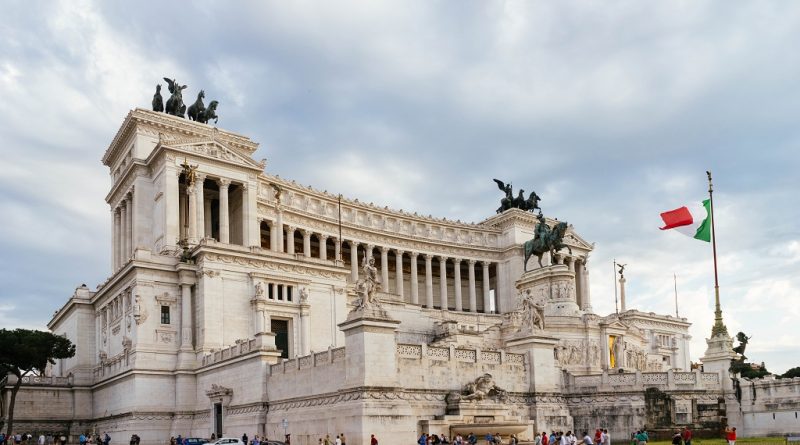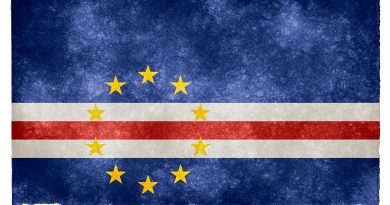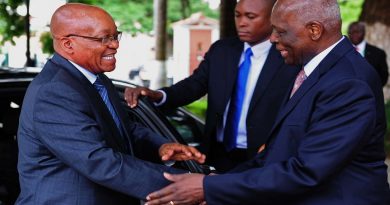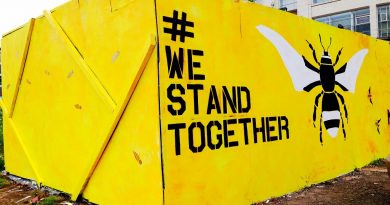The Italian political chaos, explained simply
The result of the Italian general election held on March 4, 2018 has been considered a “political earthquake“, not only in the Belpaese, but also for the implications it could bring to the European Union. In this post-vote analysis, we will try to explain what is the meaning of this election, and which could be the consequences in Italy and the EU, starting from the most complicated and tricky question: who did win the Italian general election?
Italian election: features and winners
Any electoral analysis should start from the rawest, plainest features, i.e., the ballots. Out of the more than 35 electoral lists taking part in the general election, only 6 have won at least one parliamentary seat. These lists are, in descending order of number of ballots concerning the Lower Chamber (the features for the Senate have no sensible differences), the Movimento 5 Stelle (Five Star Movement, M5S) with 32,7% of the ballots, the Partito Democratico (Democratic Party, PD) with 18,7%, the Lega (League, LN) with 17,4%, Forza Italia (Forward Italy, FI) with 14%, Fratelli d’Italia (Brothers of Italy, FdI) with 4,3%, and Liberi e Uguali (Free and Equal, LeU) with 3,4%. Thusly, M5S has been the most voted electoral list in the general election.
However, there were two coalitions that took part in the election, the centre-left one headed by PD plus minor lists, and the centre-right formed by LN, FI, and FdI. The centre-left coalition won slightly more than 20% of the ballots, while the centre-right coalition won around 37% of the ballots, not surpassing that 40% threshold that would have assured an absolute majority at both chambers. So, the centre-right was the most voted coalition in the general election, with LN heading it.
Taking into consideration these features alone, who, then, won the Italian general election? Considering that an electoral list or coalition should have at least 316 seats in the Lower Chamber and 161 in the Senate, one can rightly say that no one has won the elections, as no one can form a government supported by an absolute majority in the Parliament.
Nevertheless, one can say that the winners of the election are M5S and LN with their leaders Luigi di Maio and Matteo Salvini. The former, besides being the first electoral list in terms of ballots, exceeded the most optimistic predictions, having been indicated at around 28% in the polls. Hence, every political force in the parliament will probably have to keep an open channel for political negotiations with them, not to mention the central role that they will play throughout the forthcoming XVIII Italian legislature. Regarding LN, even if it is only the third political force in Parliament with only 17,4% of the ballots, it has reached an historical vote peak, and it is the first party within the centre-right coalition that has surpassed Silvio Berlusconi’s FI, unanimously considered the leader and founding father of the Italian centre-right since 1994. As mentioned before, thanks to this result, Matteo Salvini will lead the talks for the centre-right coalition to form the new government.
Vae Victis! The losers of the Italian general election
If it is quite difficult to assess who were the winners of the election, it is, on the contrary, very easy to indicate who the losers were. These are the political masterminds of the three governments formed in the XVII Italian legislature and leaders of the two biggest parties of the Italian establishment, i.e., PD secretary Matteo Renzi and FI president Silvio Berlusconi. The former experienced a complete debacle in this election, falling from the 30% of the ballots in 2013 election to the current 19%, well under the 23% foreseen by the polls and the 20% considered as the red-line for the party. However, since no political force had enough votes to have a majority in Parliament, the PD will possibly be included in the talks to form such a majority.
Concerning FI, having received less votes than those foreseen by the polls before the elections (14% against 16,7% in the polls) is not the main element to describe its defeat; on the contrary, having fallen behind LN is the main political element, as for the first time in his political history, Berlusconi has not been crowned leader of the centre-right coalition in terms of ballots. However, even in this context Berlusconi still has some good cards in his deck: FI’s political force has not collapsed, holding around 40% of the total seats of the centre-right coalition; Berlusconi’s and FI’s ability to create networks in Parliament, among diverse political groups, has always been remarkable in the previous legislatures. In addition, Berlusconi has demonstrated several times that he is capable of impressive political comebacks when everyone was already saying that he was politically dead.
What’s next? How to form a government in Italy
From a purely institutional point of view, the next step in the process of creation of a government will take place when the new chambers will take office and they will elect their presidents on March 23. In a situation in which a majority in the chambers is clear, this step is considered just as a formality; however, after this general election in which no clear majority is recognizable, the election of the two presidents will be a clear sign of the balance of powers in the chambers and the direction that the negotiations to form a majority in Parliament are following. The names for the two presidents will be mostly determined by the course of the creation of a majority in Parliament; however, some names have already come out, like Roberto Calderoli’s, an experienced senator for LN, Roberto Fico’s, a former M5S president of the parliamentary commission monitoring the activities of the public television, and Graziano Delrio’s, a former PD minister of infrastructures.
After the two elections, the President of the Republic (PR) Sergio Mattarella will start a round of talks with all the forces represented in Parliament to assess who can guarantee a political majority and to appoint a Prime Minister to form the government. In the case no one will be able to guarantee such a majority, Mattarella will give an explorative mandate to a representative of the major political force represented in Parliament for that person to hold another round of talks with the other political forces and find support for a government, exactly as it happened with former PD secretary Pier Luigi Bersani in 2013. So, the question in this case is, again, who is the winner of the elections? Who has enough seats in Parliament for the PR to indicate as PM? Mattarella could appoint Luigi di Maio as the in pectore PM for the M5S, as this movement is the strongest in Parliament; however, he could appoint Matteo Salvini as the designated leader of the centre-right coalition, the most numerous group in the Parliament. If no majority will spawn, it is also possible that Mattarella will suggest a governo del presidente, a ‘presidential government’, i.e., he will indicate a name super partes for the role of PM and a short, clear political agenda for a government that would stay in charge only few months with the support of most of the parliamentary forces, and then the two chambers will be dismissed.
The possible alliances: a ‘Mexican standoff with Italian sauce’
Taking into consideration the features described above, the Gordian knot of this political chaos is two of the three main political groups – M5S, LN, and PD – to find the willingness of making a deal to form a government.
From a superficial point of view, the leaders of M5S and LN have already guaranteed that they want to ‘talk with everyone’ in Parliament, in an open, frank confrontation to discuss the points of their political programs. On the other hand, PD’s secretary Matteo Renzi said clearly that PD has lost the elections and it will not take part in coalitions with other parties or groups – resembling Martin Schulz’s initial position after the SPD’s defeat in last September’s election in Germany. However, we already know that reality in Germany went otherwise.
However, political perspectives in Italy can change quite abruptly, and more deeply in this situation everything is possible. Just a few days after the elections, Matteo Renzi resigned formally as secretary of the party, leaving the incumbency to the deputy secretary Maurizio Martina, while the party is calling a congress to elect a new secretary and party cabinet. In the meantime some relevant members of the PD are raising their voice for the party to give support to a M5S government, while others are strongly against this possibility. It is clear, however, that PD will be crucial to the formation of the next government, in all but one case: if M5S and LN will reach an agreement for the formation of a new government.
In this very moment, the two winners have manifested a quite different behaviour towards the possibility of forming a government. In a letter to the newspaper Repubblica, a daily with a political position near to PD, Luigi Di Maio expressed his desire to talk with all parties willing to make the reforms Italy waits for; nonetheless, M5S is winking especially at PD, possibly thinking that this centre-left party would prefer a coalition with them instead of leaving the field to a LN headed government. On the contrary, LN secretary Salvini expressed his will of forming a government with the centre-right coalition as it has been presented in the general elections; to find the missing seats to have a majority in the chambers, he will proceed with talks with all the political forces willing to share any proposed programmatic points.
Finally, neither M5S, nor LN have expressed the possibility of forming an alliance between the two forces. Nonetheless, this political possibility has some worth, as both parties have numbers to form a strong majority in the Parliament, and some common values towards specific aspects, as reconsidering treaties with EU, scrapping a controversial pension reform, and lowering the taxes. This populist or sovereigntist bloc has been indicated by several newspapers like Financial Times, and blogs like Bloomberg and Politico, as a real possibility. However, as several have already said, more than the political turmoil within the Italian boundaries, the main problem with these elections is the concern they raised in the EU, as the possibility of the formation of an Eurosceptic government is indeed quite high.
Italian Parliament. Photo by Marco Verch / CC BY 2.0
![]() This work is licensed under a Creative Commons Attribution-NonCommercial-ShareAlike 4.0 International License.
This work is licensed under a Creative Commons Attribution-NonCommercial-ShareAlike 4.0 International License.




